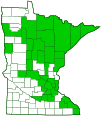Honey Mushrooms
(Armillaria mellea group)
Overview • Description • Distribution • Taxonomy
Description |
||
On young mushrooms the gills are enveloped in a protecting, Kleenex-like, cottony, membranous tissue (partial veil). At maturity, the veil breaks up to release the spores. Remnants of the veil usually remain as a ring near the top of the stalk. There are sometimes fragments of the veil clinging to the rim of mature mushrooms. The cap is 1¼″ to 6″ in diameter and convex at first. With age it may become broadly convex or flat, with or without a raised “bump” in the center, or convex with uplifted margins. The cap color is extremely variable. It may be yellowish-brown (honey colored), reddish-brown, pinkish-brown, tan, or some similar color. There are usually tiny brown scales, most dense in the center and more or less radiating outward. The flesh is thick. It is white when young, sometimes becoming pale tan with age. It is edible and tastes mild when cooked but bitter when raw. The stalk is tough, fibrous, 2″ to 8″ long, and 3 ⁄16″to 2″ in diameter. When clustered, the stalk tapers to the base. When solitary, the stalk is enlarged at the base. It is smooth, dry, and whitish above the ring, reddish-brown or yellowish below. When young it is often covered with cottony scales. The gills are white when young, becoming yellowish or flesh-colored, then brown or with dark spots in age. They are usually broadly attached and may slightly run down the stalk. Occasionally they are notched at the base. The spores are white. In mature clusters, white spore dust is usually visible on top of the lower caps. |
||
Distribution |
||||
|
Sources |
|||
| 9/27/2021 | ||||
Taxonomy |
|||
| Kingdom | Fungi (Fungi) | ||
| Subkingdom | Dikarya | ||
| Phylum | Basidiomycota (Basidiomycete Fungi) | ||
| Subphylum | Agaricomycotina (Higher Basidiomycetes) | ||
| Class | Agaricomycetes (Mushrooms, Bracket Fungi, Puffballs, and Allies) | ||
| Subclass | Agaricomycetidae | ||
| Order | Agaricales (Common Gilled Mushrooms and Allies) | ||
| Suborder | Marasmiineae | ||
| Family | Physalacriaceae | ||
| Genus | Armillaria (honey mushrooms) | ||
Subordinate Taxa |
|||
Bulbous Honey Mushroom (Armillaria gallica) Dark Honey Fungus (Armillaria solidipes) honey mushroom (Armillaria calvescens) honey mushroom (Armillaria gemina) Honey Mushroom (Armillaria mellea) honey mushroom (Armillaria NABS XI ?) honey mushroom (Armillaria nabsnona) honey mushroom (Armillaria sinapina) Ringless Honey Mushroom (Desarmillaria tabescens) |
|||
Synonyms |
|||
Agaricus melleus Agaricus sulphureus Armillaria mellea var. glabra Armillaria mellea var. maxima Armillaria mellea var. minor Armillaria mellea var. sulphurea Armillariella mellea Clitocybe mellea Lepiota mellea |
|||
Common Names |
|||
Honey Mushroom The Honey Fungus |
|||
Glossary
Partial veil
A protective covering over the gills or pores of a developing mushroom. At maturity it disappears, collapses into a ring around the stalk, or wears away into a cobwebby covering and ring zone.
Visitor Photos |
|||||
Share your photo of this fungus. |
|||||
| This button not working for you? Simply email us at info@MinnesotaSeasons.com. Attach one or more photos and, if you like, a caption. |
|||||
Sandy Jacoby |
|||||
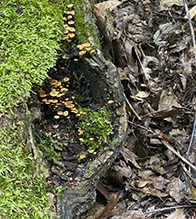 |
|||||
Jennifer Dimich |
|||||
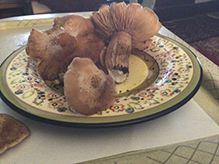 |
|||||
Luciearl |
|||||
These mushroom were everywhere on the trail. If edible, someone could have a full meal. |
|||||
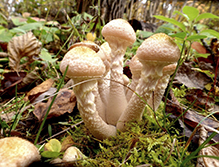 |
|||||
Jamal Matteson |
|||||
Growing like mad near my home. |
|||||
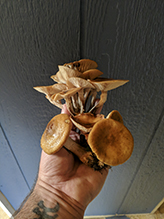 |
|||||
dg99 |
|||||
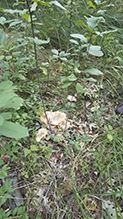 |
 |
||||
Robin |
|||||
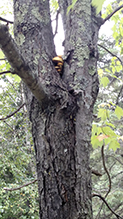 |
|||||
Diraek |
|||||
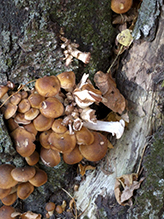 |
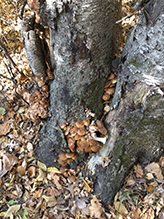 |
||||
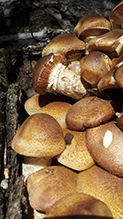 |
|||||
MinnesotaSeasons.com Photos |
|||||
|
|||||

Slideshows |
||

Visitor Videos |
|||
Share your video of this fungus. |
|||
| This button not working for you? Simply email us at info@MinnesotaSeasons.com. Attach a video, a YouTube link, or a cloud storage link. |
|||
Other Videos |
|||
| Honey Mushroom - Armillaria mellea sporeprints |
|||
About
Uploaded on Feb 24, 2009 Tradd finds a honey mushroom patch, a problematic mushrooms that attacks living and dead trees, and it is very parasitic. |
|||
| The Honey Fungus (Armillaria mellea) Roger Griffith |
|||
About
Published on Oct 8, 2013 The Honey or Bootlace Fungus (Armillaria mellea) at Spier's Old School Grounds, Beith, North Ayrshire, Scotland. This fungus is very destructive and kills many trees in plantations and woodlands. A parasitic fungus was found on one troop appearing as a white cotton wool-like growth on the caps and stems of the mushrooms. |
|||
| Armillaria mellea Βότανα |
|||
About
Published on Nov 1, 2015 Armillaria mellea, commonly known as honey fungus, is a basidiomycete fungus in the genus Armillaria. It is a plant pathogen and part of a cryptic species complex of closely related and morphologically similar species. It causes Armillaria root rot in many plant species and produces mushrooms around the base of trees it has infected. |
|||
| Honey Mushrooms - Armillaria mellea - Yellow Variety Dan Kennedy |
|||
About
Published on Oct 30, 2015 Yellow variety of Honey Mushrooms... Armillaria mellea. |
|||
| Foraging for Ringed Honey Mushrooms (Armillaria mellea) - www.Returntonature.us ReturntoNatureSkills |
|||
About
Published on Oct 12, 2015 The ringed honey mushroom (Armillaria mellea) is a common wild edible mushroom distributed widely throughout North America. Heres a video showing you a look at some of its key features.. Forage safely, |
|||

Visitor Sightings |
|||||
Report a sighting of this fungus. |
|||||
| This button not working for you? Simply email us at info@MinnesotaSeasons.com. Be sure to include a location. |
|||||
| Apricity Apricity Fall 2021 |
Location: Martin County, Fairmont, MN |
||||
| Jennifer Dimich 9/25/2021 |
Location: Ely MN |
 |
|||
| Luciearl 9/28/2020 |
Location: Cass County |
 |
|||
| Jamal Matteson 9/27/2020 |
Location: Aitkin, MN Growing like mad near my home. |
 |
|||
| dg99 September 2020 |
Location: Tamarack Nature Center |
 |
|||
| Robin 9/5/2017 |
Location: Walker, MN I am wondering if these are Honey Mushrooms. The grew in the same place last Fall too. |
 |
|||
| Diraek 10/10/2016 |
Location: Brainard, Minnesota, USA |
 |
|||
MinnesotaSeasons.com Sightings |
|||||
|
|||||

Created: 10/18/2016
Last Updated:
